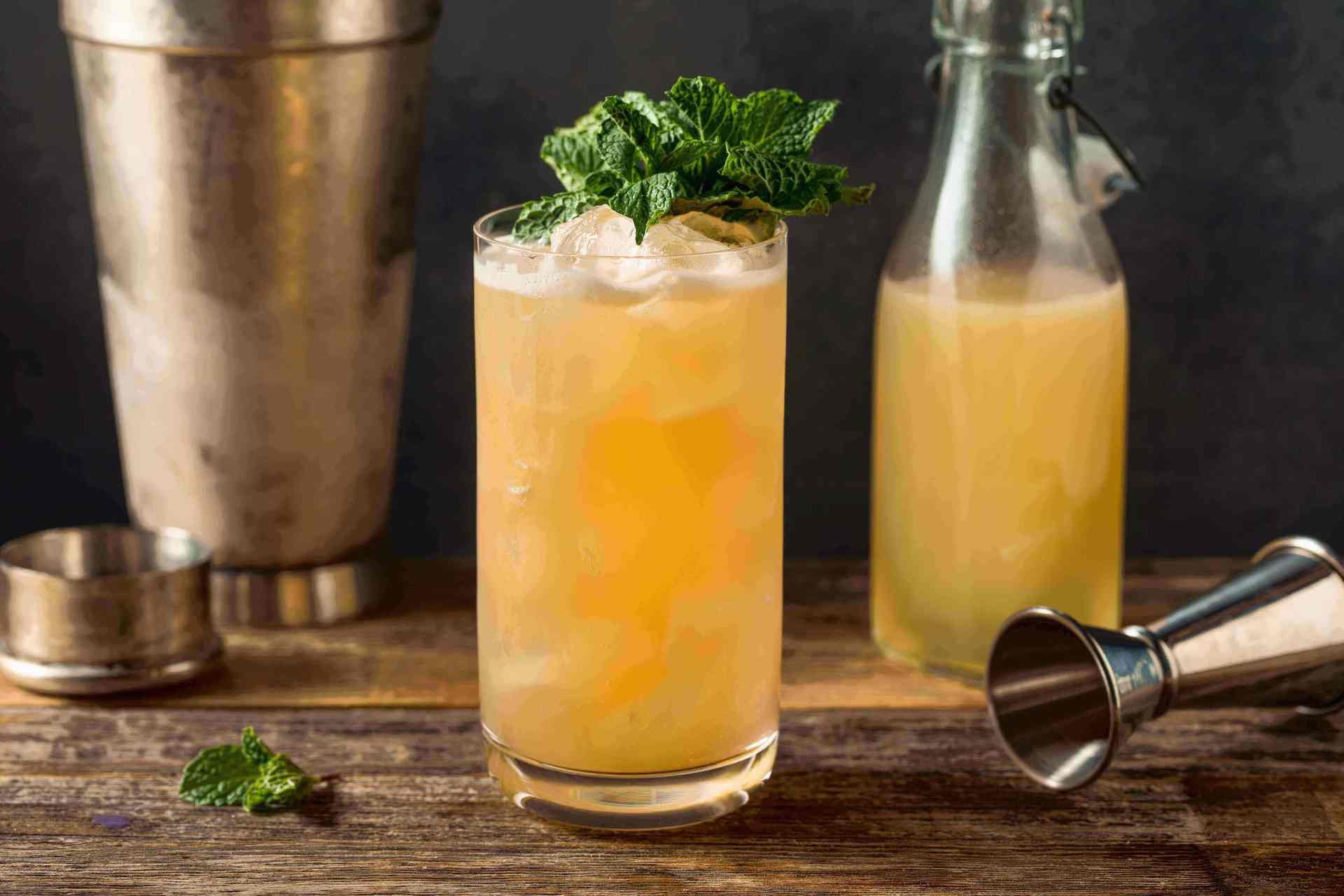Rum FAQs - All You Need To Know About Rum

Rum 101: everything you need to know
A huge array of tastes, styles and origins. Authentic stories and traditions. Unrivalled versatility. No wonder the demand for Rum continues to grow year after year. From mixing in a cocktail to sipping by a fire, more people in more countries are enjoying Rum in more ways than ever before. But how much do you really know about the spirit that’s taking the world by storm?
Join us on a journey into the world of Rum
We’re going to take you on a whistle-stop tour through the world of Rum. If you’d like to discover the ingredients used to produce Rum, the difference between dark and light Rums, or where Batavia Arrack and Cachaça come into the mix, read on…
What ingredients are used to make Rum?
Rum is produced from sugar cane. Pressing the sugarcane stalks produces cane juice, which is crushed and crystallised to leave cane sugar and thick, dark molasses. Most Rums are made from this gooey molasses although, in some cases—in particular, Martinique’s Rhum Agricole—raw cane juice is used. Yeast is then added during the fermentation process before impurities are removed and the remaining alcohol is distilled.
How much alcohol does Rum contain?
How long is a piece of string? The alcohol content of Rum can vary between 37.5% and 80%. The most common ABV is 40%, but many brands are bottled at higher or lower percentages. Some are also labelled as ‘overproof,’ which means that they have a higher alcohol content than standard Rums – usually an ABV of at least 57.5%. A ‘proof’ is a unit used to measure the alcoholic strength of a drink. One proof is double the ABV, so 80 proof = 40% vol.
Did you know? The word ‘overproof’ comes from testing a spirit's strength using gunpowder to show it hadn’t been watered down. One method involved mixing the spirit with gunpowder and lighting it with a match. If the spirit failed to catch fire it was ‘under proof’ and lacked a requisite level of alcohol. If it caught fire and burned steadily it was ‘proofed.’ If it burned quickly, you could be sure it contained a higher alcohol percentage by volume and was ‘over proof.’
Does alcohol-free Rum exist?
Alcohol-free Rum exists…well, almost. Non-alcoholic Rums usually begin life as normal alcoholic Rums, before having the alcohol removed – although small traces will remain. This helps to ensure the alcohol-free drink retains some of the authentic flavours and mouthfeel as the original alcoholic version. still undergone a fermentation process and not everyone considers it “non-alcoholic”. They also often lack the same depth of flavour that alcoholic rum provides.
Rum styles and varieties
If you think all Rums are the same, think again. Light and dark. Aged and unaged. Fresh and complex. This highly versatile spirit is produced all over the world. Different regions follow different traditions. Distillation methods range from artisan pot to modern multi-column stills. Fermentation also varies hugely, from industrially-controlled to naturally wild. As you can imagine, the result is an almost infinite number of distinctive blends.
What are the three main types of Rum?
There are simply too many varieties to list, but to keep things simple you could say there are three main types of Rum: light, heavy, and aged. You can discover more about the different here but in the meantime, here's a short guide to work up a thirst…
Light Rum AKA white or silver Rum, is typically produced from molasses in a column still. Clear, light, and neutral, Light Rum is highly versatile and a popular choice for cocktails.
Heavy Rum AKA high ester Rum has a distinctively robust flavour and aroma. Widely used in cocktails, it is also a common ingredient in the flavour and fragrance industries.
❓❓Esters are organic compounds produced during the fermentation process that add a fruity, floral depth.
Aged Rum is a premium spirit aged in wooden barrels for a few years or even decades. Over time, the Rum absorbs the characteristics and colour of the barrels to produce a rich and complex flavour.
What is the difference between Rum and Rhum Agricole?
Martinique Rum, or ‘Rhum Agricole’, is unique. While most Rums are distilled from molasses, Rhum Agricole is produced from freshly pressed sugar cane juice. Powerful and potent, it is known for a fresh and grassy flavour.
Rum Agricole must not only be produced on the island of Martinique, but also be officially recognised as AOC Martinique Rhum Agricole. As such, it also needs to adhere to the following criteria:
Geography: crafted from sugarcane cultivated in one of Martinique's 23 municipalities and Guadeloupe.
Agriculture: low-yield sugarcane cultivation to discourage unsustainable fertilisation practices.
Sugarcane production: cane juice extraction must use cold-pressing methods, with a Brix level of no less than 14 and a pH exceeding 4.7.
Fermentation: must occur in batches and open containers with a capacity not exceeding 50,000 litres (or 13,208 gallons) nor extend beyond 72 hours.
Distillation: follow rigorous distillation guidelines using continuous distillation columns ranging from 0.7 to 2 metres in diameter.
Bottling: bottled in Martinique and Guadeloupe.
You can read more about Rhum Agricole right here.
What is English Rum?
English Rum, or English-style Rum to be exact, is one of the first Rums. Originating in the Caribbean as early as the late 17th century, former British colonies used traditional English distillation methods known as pot still distillation - also used for whisky. This results in a heavy-bodied style of Rum and explains why it is referred to as English-style Rum. The British Navy provided a daily Rum ration for its seamen, which played a key role in popularising the spirit as more and more regions came into contact with its unique taste. Want to know the full story? You can find out more here.
White Rum or Dark Rum: which is best?
In general, Dark Rum has a bolder flavour making it a better choice for sipping. White Rum, on the other hand, is usually lighter and fresher, making it a good choice for cocktails. Overall, neither variant is ‘better’ than the other. After all, the type of Rum you prefer is simply a matter of taste.
White Rums are generally unaged, or aged very little, with little or no colour, which is why they are also known as silver or clear Rums. Pot still distillation can introduce a bolder, heavier flavour profile, while column stills tend to produce a lighter taste. Due to their clear colour, white Rums are commonly used for cocktails and mixed drinks such as the classic Mojito, the Mai Tai, and the Daiquiri.
Dark Rums are characterised by deep rich hues ranging from gold to brown and even black. Even so, they all start as a clear liquid and derive their colour either from the addition of caramel E150a or ageing in wooden barrels. Caramel is used solely for coloring purposes and does not contribute any flavor or sweetness. Ageing in wooden barrels imparts a distinctive, more complex flavour that reflects the type of barrel. As a result, this kind of dark Rum in particular is perfect for enjoying neat.
You can find out more about the characteristics of white and dark Rum in this blog.
What is Cachaça?
Is cachaça the same as Rum? Well, kind of. Cachaça is a Brazilian distillate made from fresh pressed sugarcane juice, much like Rhum Agricole from Martinique. That’s why Cachaça is also known as Brazilian Rum. But it is more the cousin than a brother or sister of Caribbean Rum and the totally distinctive grassy, earthy, even funky flavour profile is quite different.
Did you know? Cachaça represents an important part of Brazilian culture , dating back to the 16th century when the Portuguese introduced sugarcane to the country.
What is Batavia Arrack?
Batavia Arrack is one of oldest known distilled spirits, produced exclusively on the island of Java, Indonesia. What sets Batavia Arrack apart is the use of local red rice. This rice is added to the molasses, with the yeast it contains kick-starting the fermentation process. The name has its roots in the old Dutch term for Jakarta, Indonesia’s capital located on Java. Trade routes brought the spirit to Europe, where it became popular as an essential ingredient in Swedish Punsch.
Note: Don’t confuse Batavia Arrack with Middle Eastern Araks - the wide range of alcoholic products distilled from various fruits and plants such as anis seeds, palm sap, or coconuts.
What makes Rum different from whiskey?
Whereas Rum is produced from sugarcane, whiskey is made from grains such as barley, corn, wheat, or rye. Then you have the fact that all whiskey must be aged, which does not apply to Rum. That means that Rum can be clear as well as dark, while whiskey is typically amber or brown, colour imparted from the wooden barrels. Flavours vary widely across both, depending on the ageing process, the type of barrel, the distillation process and the base ingredients.
Whiskey: diverse and complex, from the smoky, peaty notes of Scotch whisky to the sweet and robust character of Bourbon.
Rum: generally sweeter, but a huge array of flavours covers everything from light and fruity flavour profiles to rich and spicy.
Rum vs vodka: Which is better?
Rum and vodka are two of the most popular spirits around. They share similar levels of alcohol, with Rum typically 40% ABV (although this could be anything up to 65%+ - see above), and vodka is usually around 35% - 40%.
Vodka is generally made from potatoes or grains. Potatoes are mashed and then distilled, while grains are ground and distilled. As we’ve already seen, Rum is produced from sugarcane molasses or sugarcane juice.
Vodka tends to have a more neutral, drier flavour that works well for cocktails. Rum, on the other hand, has a slightly more complex flavour that still works well in cocktails, while the more complex and deep taste of aged Rums make them ideal for sipping neat. So the short answer is not which is best, but which works best for you?
Rum dietary properties
Is Rum gluten-free?
Pure Rum is naturally gluten-free as it is produced from sugarcane molasses or sugarcane juice. In fact, most pure distilled liquors are gluten-free, including those produced from grains. This is because if performed correctly, the distillation removes proteins from the spirit. If you are looking for a gluten-free option, it is worth pointing out that flavoured or spiced Rums may contain additives that could contain gluten.
Is Rum vegan?
Yes, pure Rum is vegan. So is virtually every pure distilled spirit, from gin to vodka to whiskey. Again, you’ll want to keep an eye on any additives used for flavoured Rums.
Is Rum sugar-free?
Rum is produced from sugarcane molasses or sugarcane juice, so you’d think it must contain sugar, right? Wrong. Pure Rum is usually sugar-free or at the most low in sugar and, once again you have the distillation process to thank. Be aware, however, that some Rum producers may add sugar to fine-tune the flavour, so it’s always worth double checking the nutritional information.






